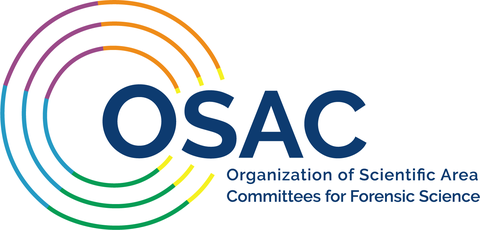
Overview
The National Institute of Standards and Technology (NIST) has announced plans to update the Organization of Scientific Area Committees (OSAC) for Forensic Science in ways that will streamline the production of forensic science standards. The updated OSAC 2.0 will maintain the detailed technical review of standards during the OSAC Registry approval process but will also make “interim documents” publicly available to the forensic science community while formal standards are under production.
Updates to Organizational Structure and Membership
The number of subcommittees will decrease from 25 to 17.
Subcommittees that cover similar content areas and that can benefit from having members work more closely together will be combined. The size of subcommittees may change over time to better address the complexities of the specific disciplines they address. NIST will work with OSAC leadership over the next year to finalize the subcommittee structures, names, and focus areas.
All subcommittee members will remain in their assignments.
If a member’s subcommittee is being merged, they will become members of the newly merged unit. For subcommittees that may eventually decrease in size, OSAC will use term expiration dates to make the needed adjustments.
Most SAC members will transition to subcommittees.
Scientific Area Committees (SACs) will be smaller and provide unified leadership and coordination for their subcommittees, with the SAC Chair representing the subcommittee’s strategic interests on the Forensic Science Standards Board (FSSB). Subcommittee chairs will also be SAC members so they can coordinate their activities at the SAC level. Existing non-chair SAC members will transition to subcommittees or other new roles in their relevant content area.
Resource committee members will transition to become voting members of subcommittees.
One lesson learned from OSAC 1.0 is that once a document is completed, it can be difficult to add any legal, human factors, statistics, and quality assurance aspects that may have been missing. Therefore, in OSAC 2.0, opinions will be incorporated earlier in the drafting stage of each document rather than after the document is completed. To accomplish this, current members of the resource committees will be embedded in task groups and become voting members of subcommittees. In addition, virtual task groups will be established to allow all OSAC legal, statistical, human factors and quality assurance experts to collaborate on topics of common interest. Resource Committees will no longer exist.
Interdisciplinary Task Groups will be established.
Greater effort will be focused on developing interdisciplinary standards that can bring uniformity across disciplines. Some existing members may be appointed to Interdisciplinary Task Groups in lieu of their position being modified at the SAC or subcommittee level.
Updates to the Standards Approval Process
The OSAC Registry will remain in place.
The OSAC Registry will continue to provide an up-to-date list of OSAC-approved standards.
Internal Technical Review Panels will be established per document.
In OSAC 1.0, final technical review came at the end of the process, after a standard was published and while it was being considered for placement on the OSAC Registry. This technical scrutiny will be more effective if it happens earlier. In OSAC 2.0, Internal Technical Review Panels made up of OSAC members and affiliates serving as volunteers will be established for each draft document. These panels will review draft documents according to set criteria and provide comments to the drafting OSAC Subcommittee for consideration. The OSAC application will be revised in the coming months so interested parties can apply to serve on Internal Technical Review Panels.
The open comment period will occur earlier in the process.
The process will be more efficient if all comments are received earlier. In OSAC 2.0, stakeholders will submit comments before a draft standard is submitted to a Standards Developing Organization (SDO). Documents will also receive additional input as they move through the SDO’s process.
Interim documents will be posted for community use.
The standards development process at an SDO can take one to two years and the community would benefit from access to the interim documents during this phase of the process. Therefore, interim documents will be made available on the OSAC website. These documents will be posted after the Internal Technical Review Panel has completed its work and the open comment period has ended. Interim documents may change when finalized and published by the SDO.
Timeline
NIST and the FSSB will implement some changes this fall, including integration of the Resource Committees and piloting the Internal Technical Review Panel/open comment process. Other changes will be implemented in 2020.
NIST will work with the FSSB to determine the size and membership of the Scientific Area Committees, subcommittees and Interdisciplinary Committees. A new Charter and Bylaws document will be developed, and Terms of Reference documents will be modified. The new OSAC 2.0 Organization will officially launch October 1, 2020.

